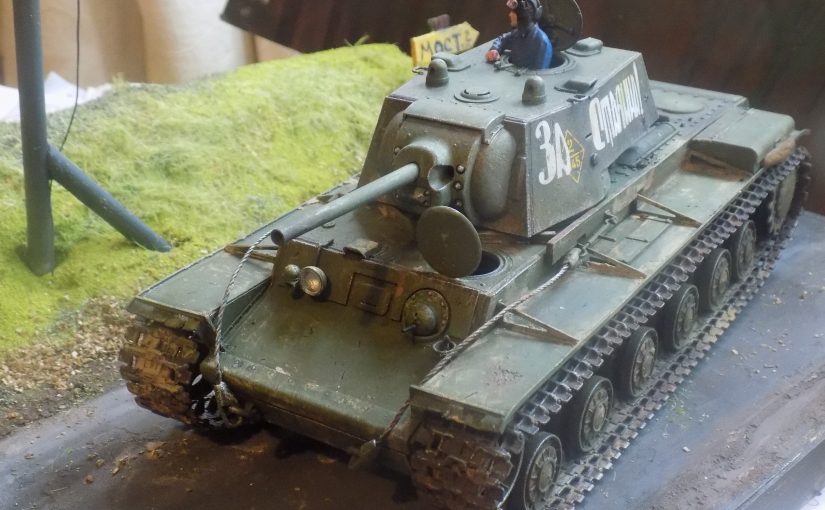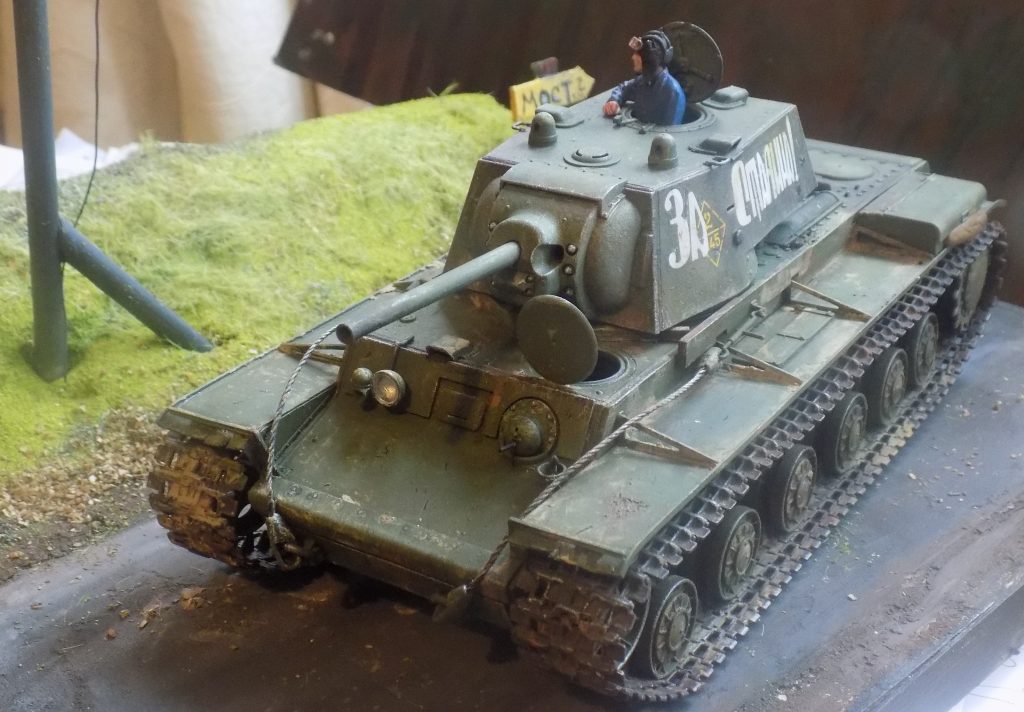
This is the famous Soviet heavy tank, which first went into battle during the last weeks of the Soviet-Finish war in 1940. Along with the legendary T-34, these Soviet tanks came as an enormous surprise to the Germans at the start of their campaign against the Soviet Union and it was one of the factors that contributed to the failure of their Blitzkrieg.
Mass production of the tank was started at the Kirov works in Leningrad but from July 1941, it was also produced at Chelyabinsk beyond the Urals.
The tank was the brainchild of chief engineer Josef Kotin and his team at the Kirov factory and took the designation KV from the initials of Soviet defence commissar Kliment Voroshilov:
‘The credentials of the hoary old Bolshevik general Kliment Voroshilov, charged with the defence of Leningrad, rested solely upon his loyalty to Stalin; he despised professional soldiers and understood nothing of military science. Moscow despatched a large food convoy to the city, but Voroshilov decided that to acknowledge a need for it would represent defeatism. He diverted the food elsewhere, and launched impromptu assaults on the Germans which yielded only slaughter’.
‘Voroshilov, flown back to Moscow, dared to denounce Stalin to his face, shouting: ‘You have yourself to blame for all this! You’re the one who annihilated the Old Guard of the army; you had our best generals killed!’ When Stalin demurred, the old revolutionary seized a salver bearing a roast suckling pig and smashed it down on the table. Voroshilov was fortunate to escape a firing squad’.
From Max Hastings, All Hell Let Loose. The World at War 1939-45. pp168-169. (2011).

The KV-2 cousin of the KV-1 mounted a monster 152mm howitzer gun although it was not widely used. When Hitler first heard of the existence of the KV-2, he did not believe it possible that a gun of that calibre could be installed on a tank at all!
The repair of KV-1 tanks during the siege of Leningrad was a great feat of the workers of factory 371. Emaciated workers could hardly stand on their feet or lift their tools but the enterprise did not stop work. They could have done with that suckling pig!
At the start of the Great Patriotic War in 1941, the KV-1 was the most powerful and heavily armoured tank in the Red Army, and it could be considered one of the most powerful heavy tanks in the world at that time. It had a weight of 47 tons and a crew of 5. The engine was a V-2k liquid cooled diesel. Maximum speed 35km/h. The armament was a ZIS-5 76.2mm main gun and 3 DT 7.62mm machine guns.
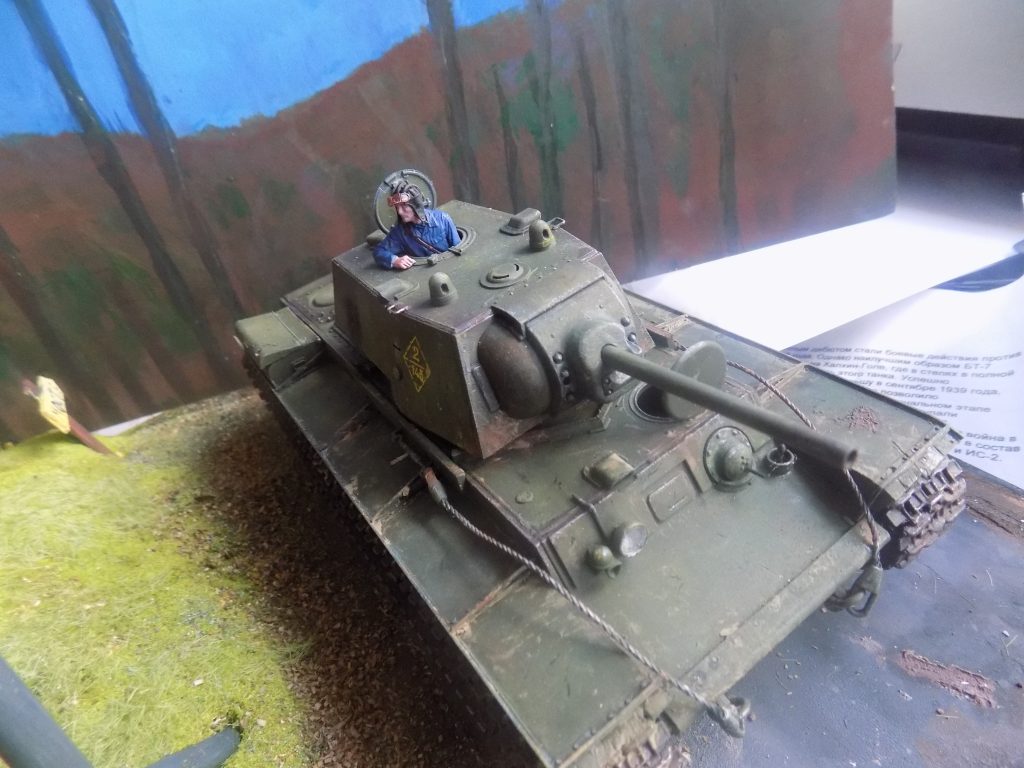
Welded armour plate was used to create the KV-1 hull and turret. At 75mm thick on the initial design and with 90mm sections around the gun, it offered unrivalled protection. The only weapon that could effectively penetrate its armour from direct fire was the famous German 88- mm anti-aircraft gun. There were several incidents of one KV-1 stopping the offensive of dozens of German tanks.
The main purpose of heavy tanks is to destroy enemy fortified points, vehicles and manpower and until 1943, the KV-1 was successful in this task. But with the appearance on the battlefield of the heavy German Tigers and Panthers, it became clear that the combat properties of the KV-1 were not enough to cope with them. Consequently, the heavy IS-2 tank was created to replace it.
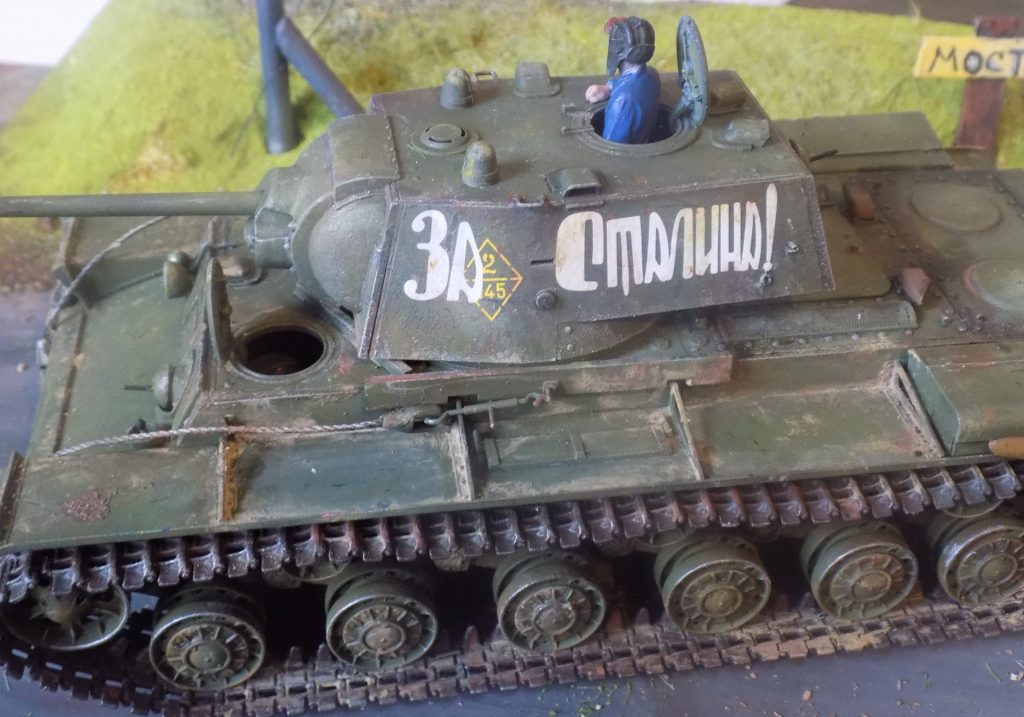
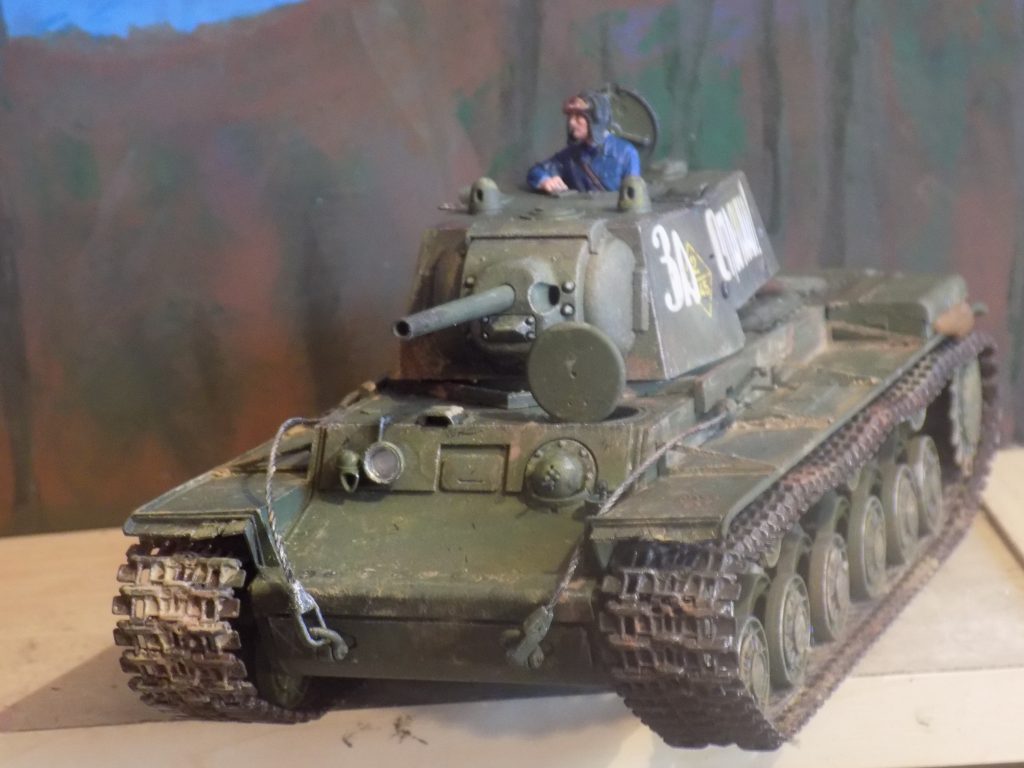
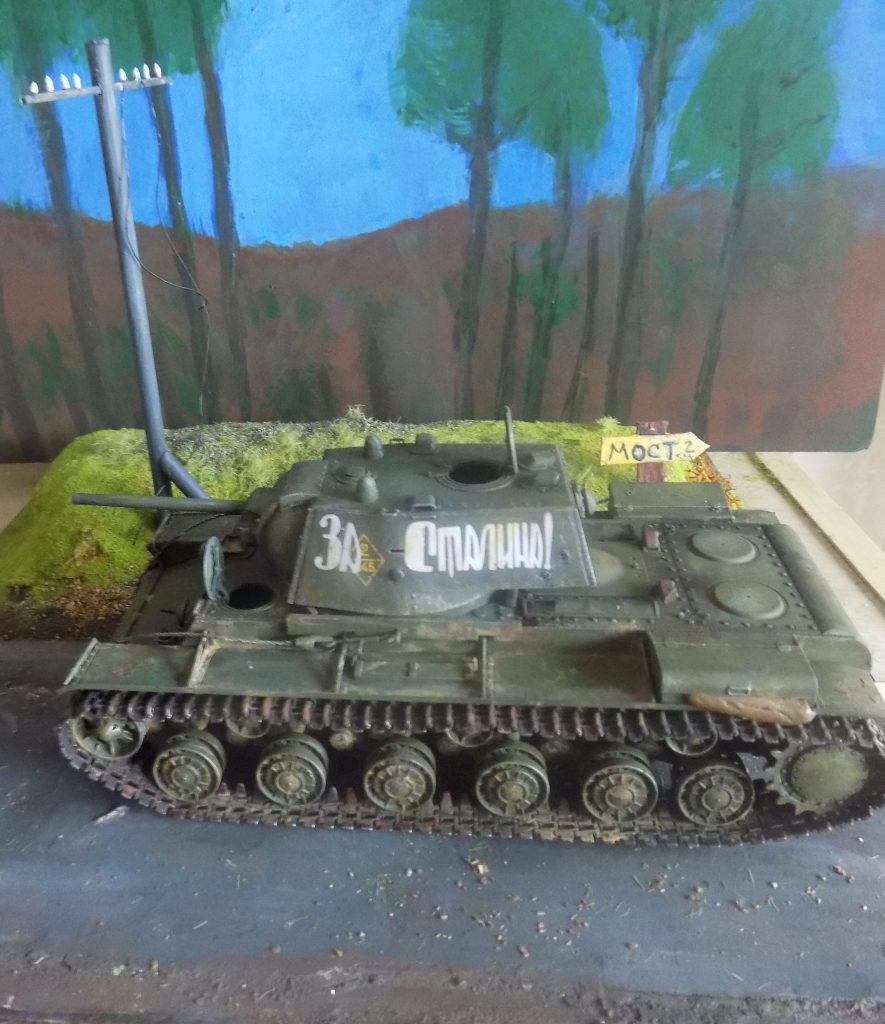
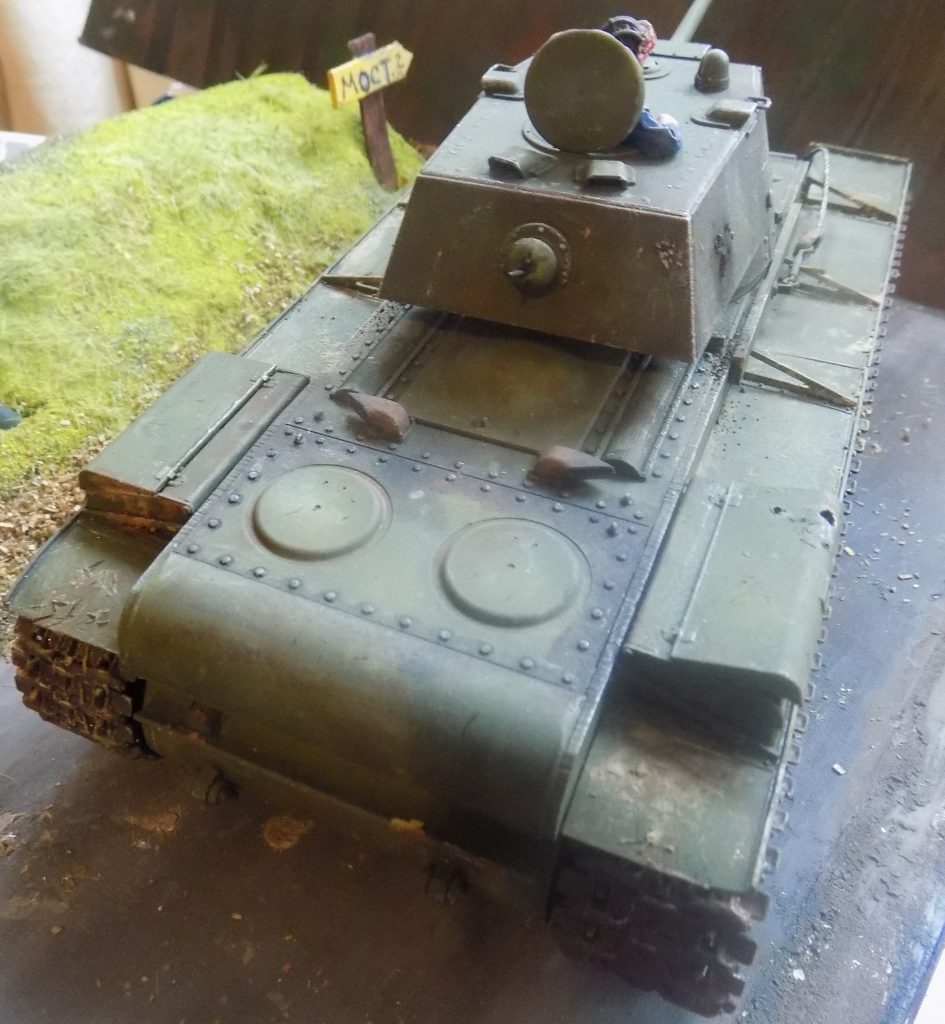
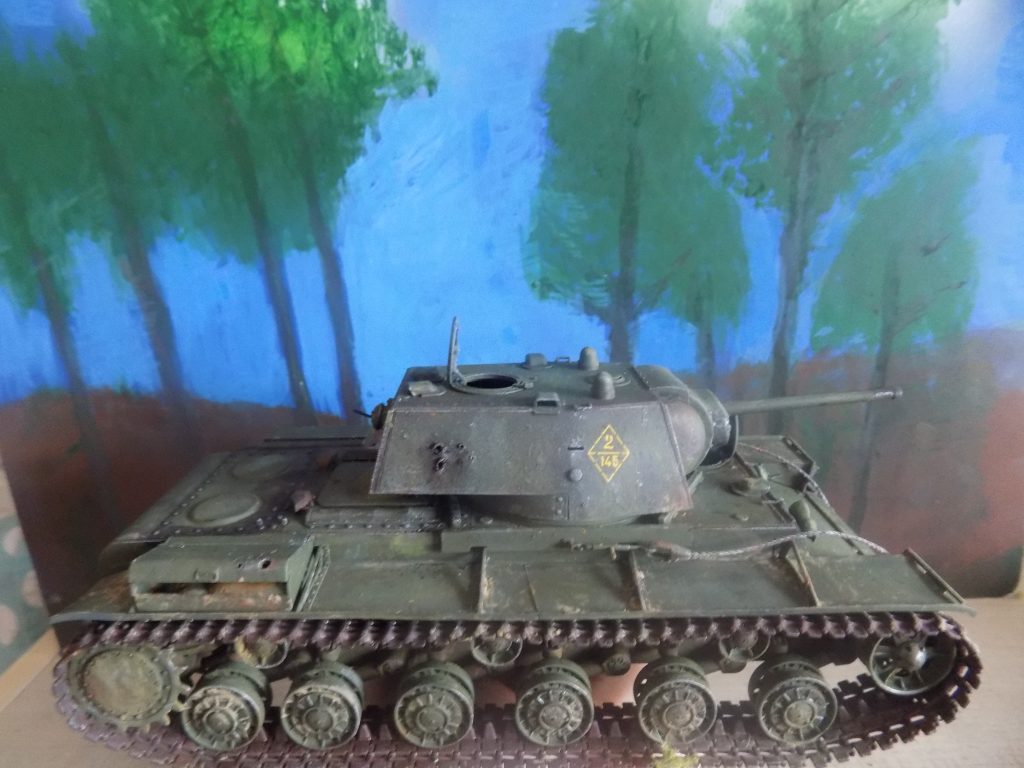
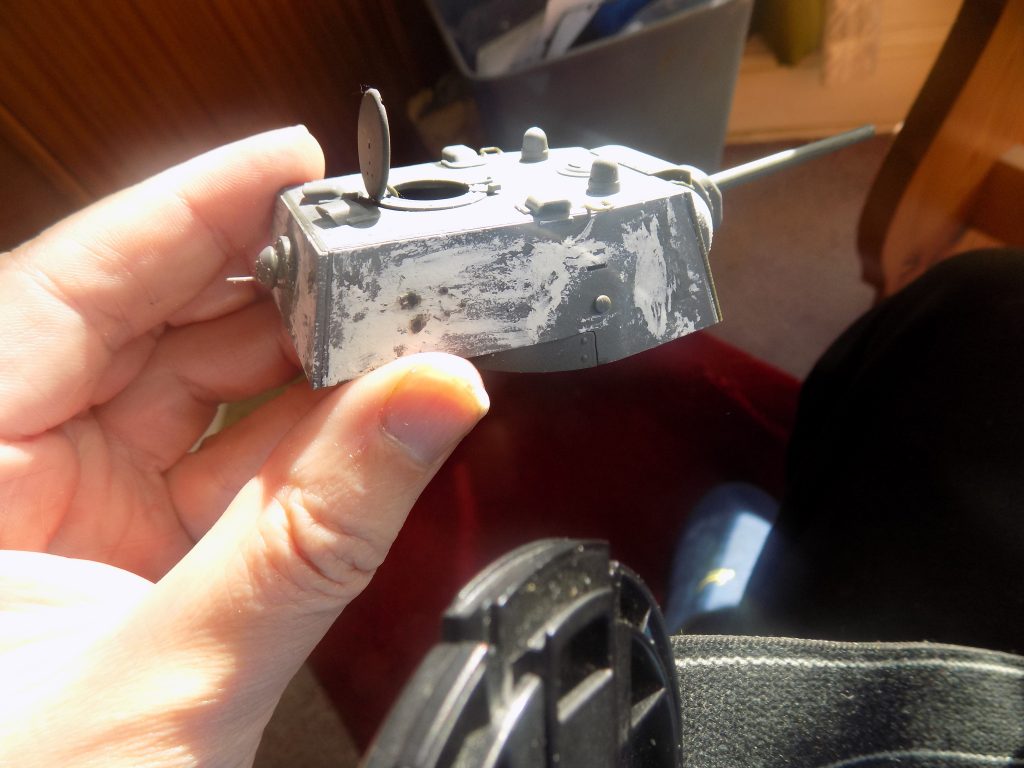
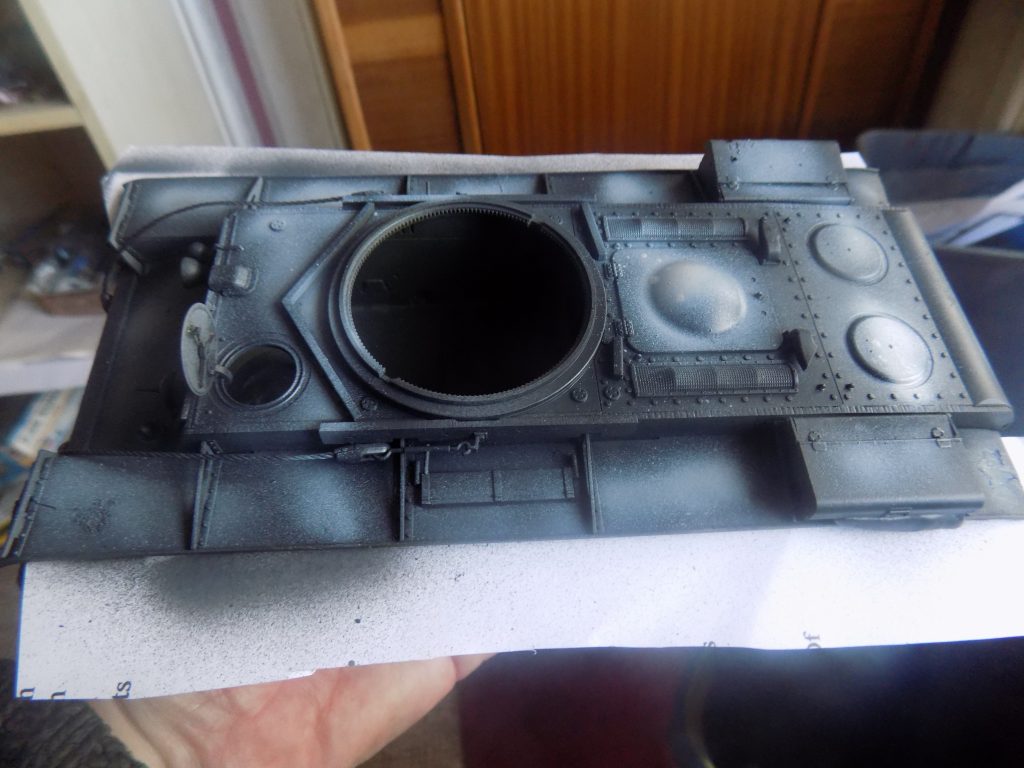

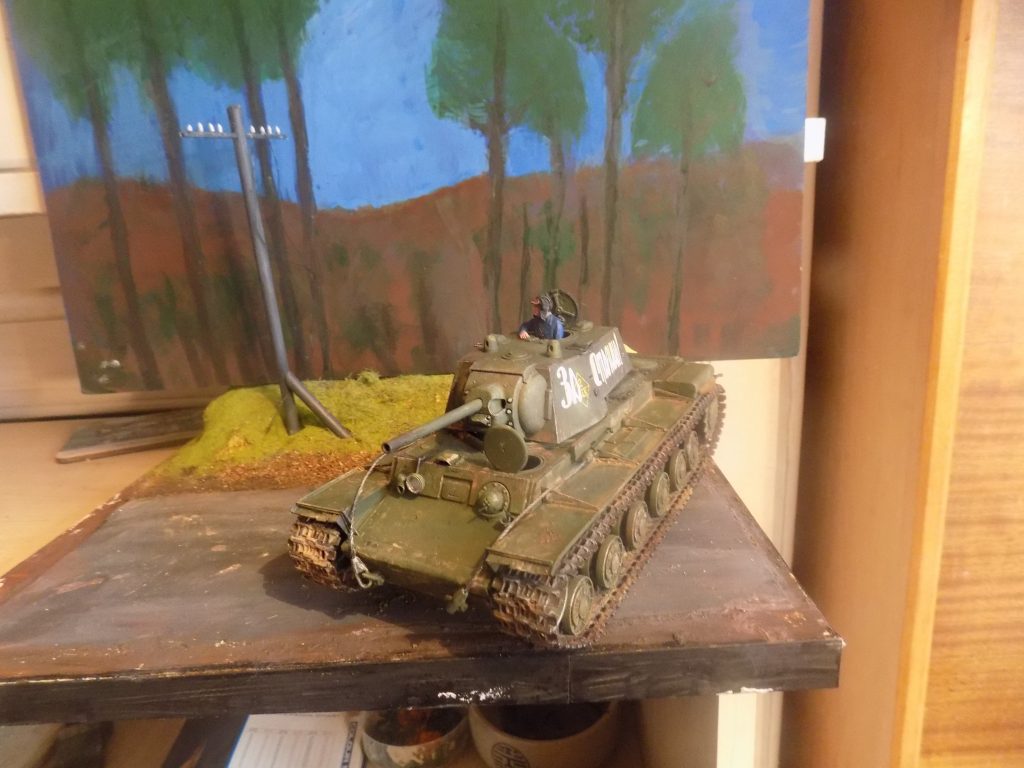
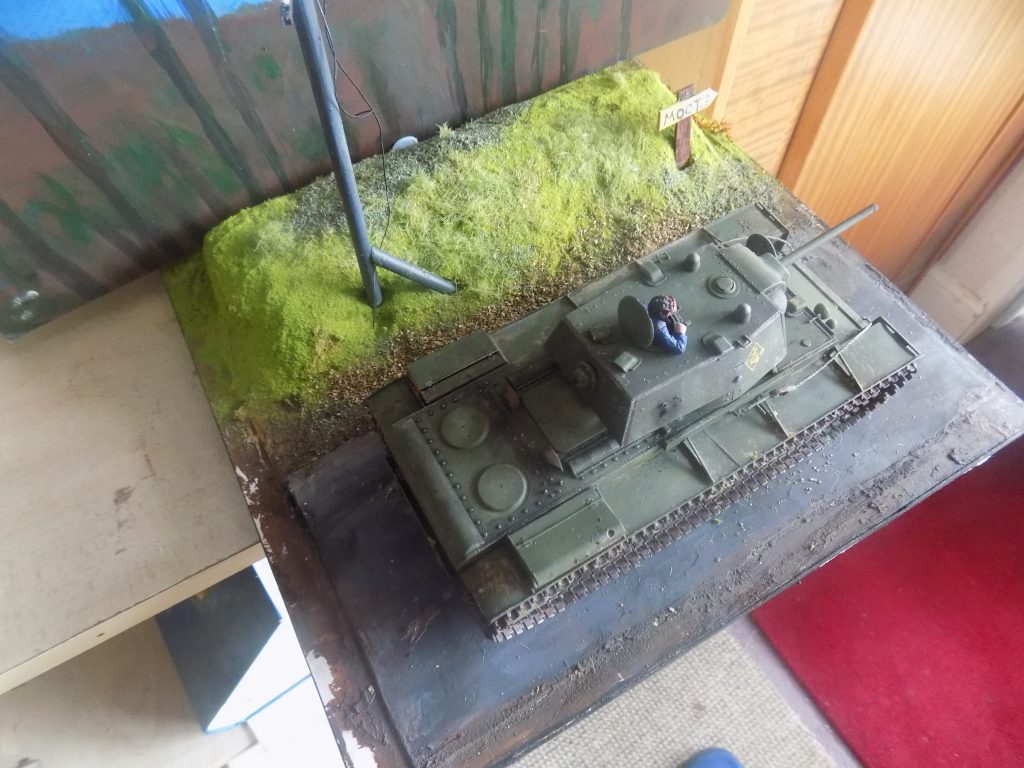
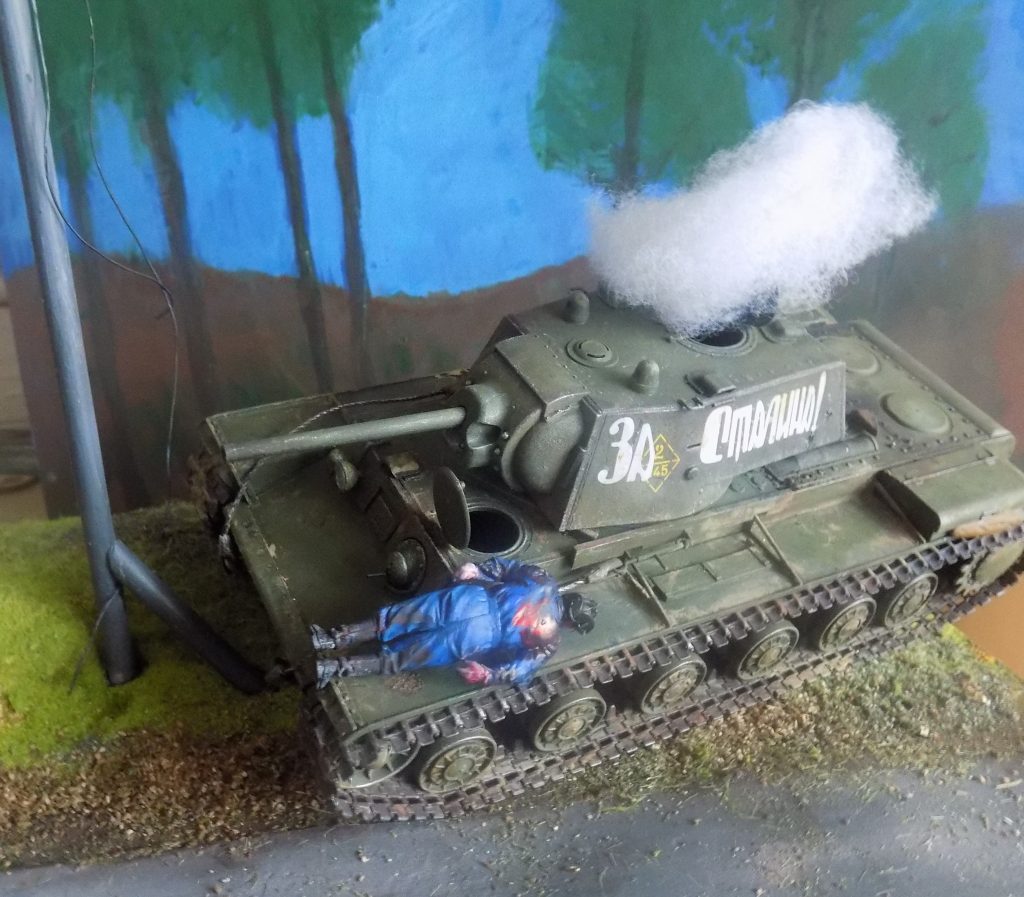
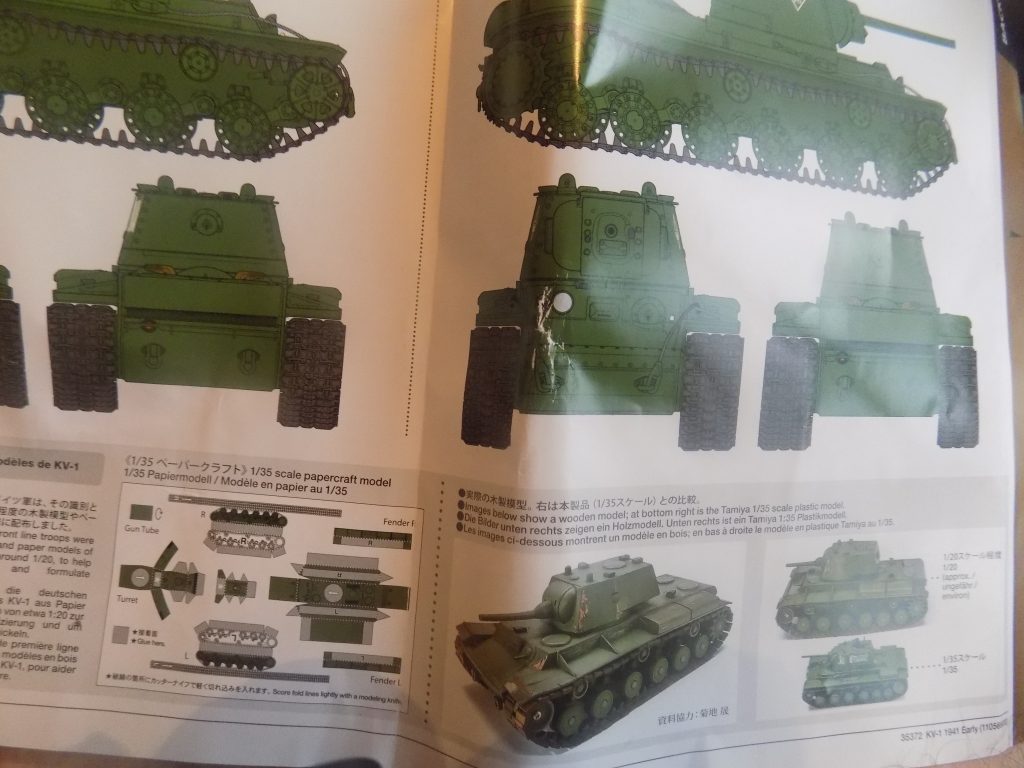
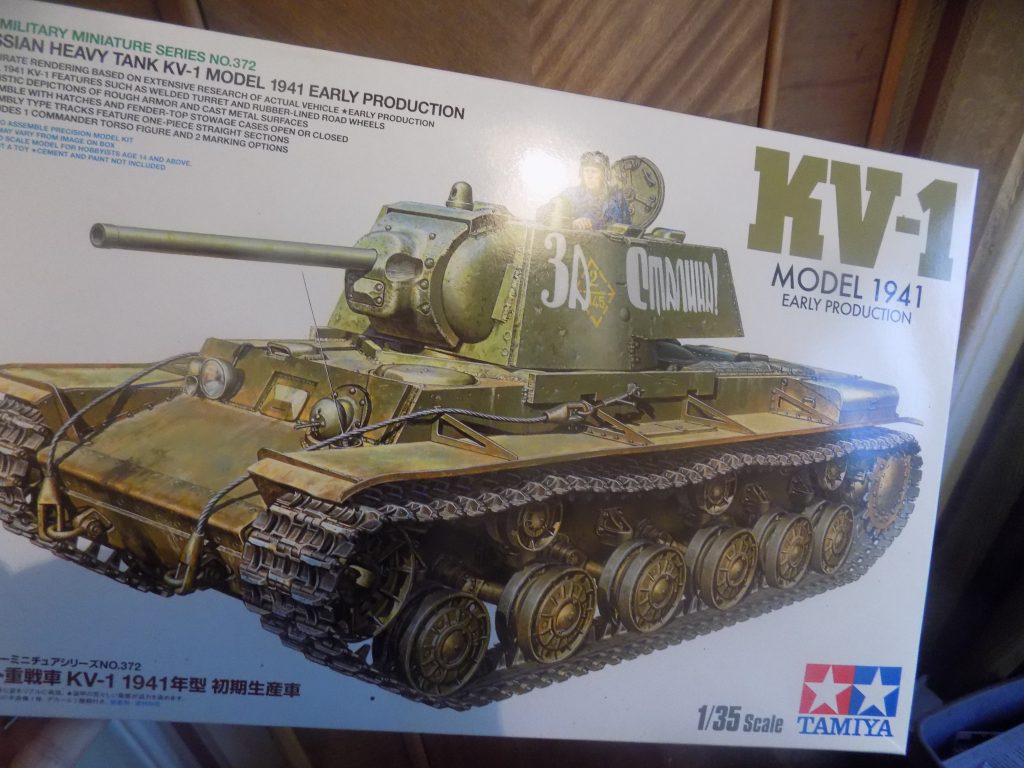
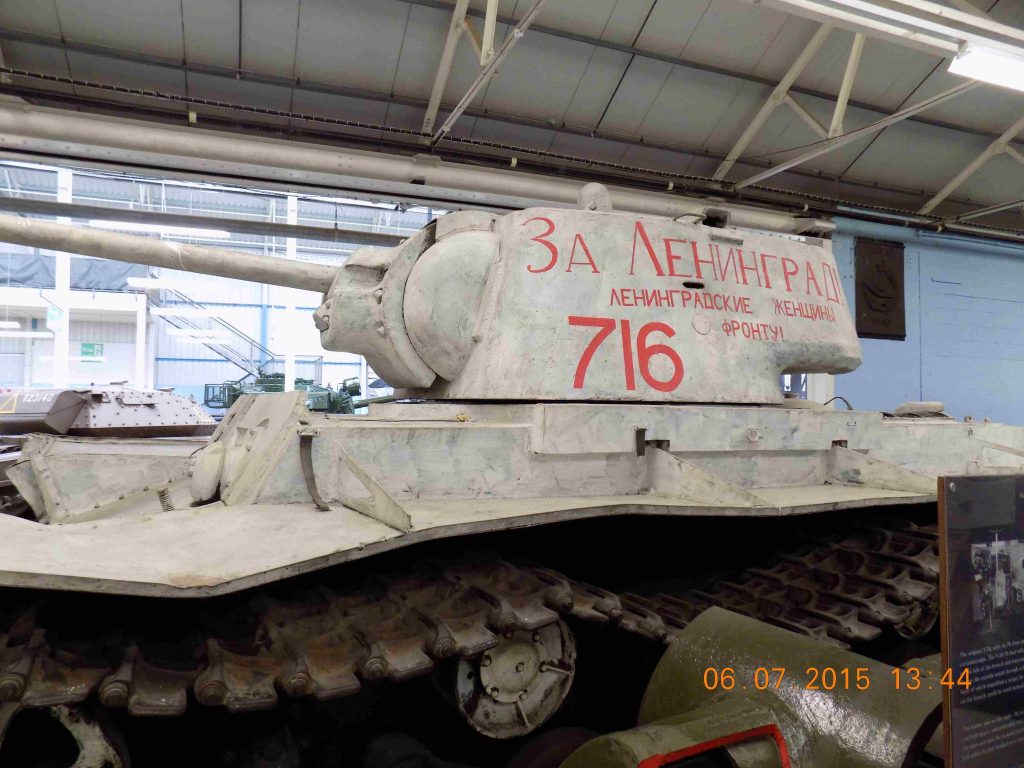
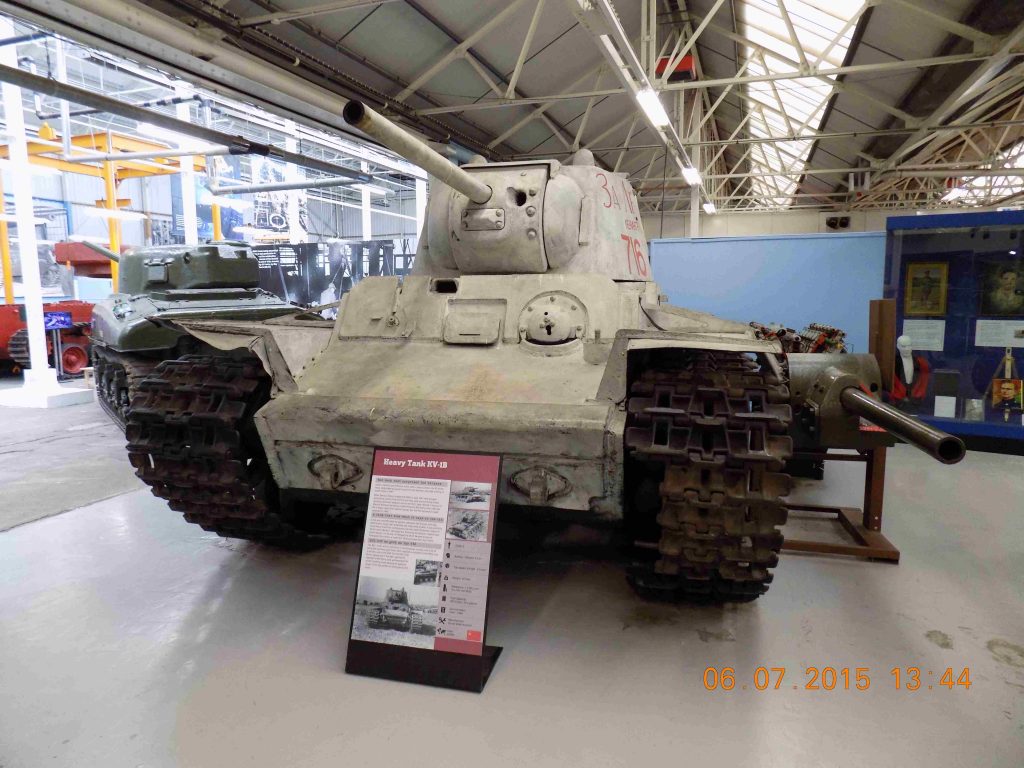

A single KV-1 held back the attack of the German Seckendorf battle group for two days. On 20th June 1941, a unique case occurred when one Russian KV-1 tank, supposedly part of the 2nd Panzer Division, managed to block the supply route of the Seckendorf combat group, created on the basis of the 6th German Panzer Division, in the area the Lithuanian city of Raseinia and blockaded it for two days. First, the tank defeated a convoy of 12 trucks with ammunition and food. It was impossible to get to the Soviet tank – the roads passed through swamps. The advanced German units lost their supplies. The seriously wounded could not be evacuate to the rear and died. An attempt to destroy the tank with a 50mm anti-tank battery from a 500-meter distance ended in heavy losses; two 50-mm guns were blown to pieces, the other two were seriously damaged. The gunners lost several men killed and wounded. The Russian tank remained unscathed despite 14 direct hits. The Germans were able to pull out the damaged guns only at nightfall. The next day, an 88-mm anti-aircraft gun, removed from the front, was moved to the position of the tank. The tank allowed it to get closer than 700 meters. While the gunners, terribly nervous, were aiming and loading the gun, the tank turned the turret around and fired first. The heavily damaged antiaircraft gun fell into a ditch. Several perished from the action, while the rest were forced to flee. Machine-gun fire from the tank prevented the removal of the gun and pick up of the dead. Sappers were dispatched at night. They planted explosives under the KV tracks. The charges exploded as expected, but were only able to snatch a few pieces from the tracks. The tank remained mobile and continued to block the supply route. On the first day, the crew, oddly enough, was supplied with food by local Lithuanian peasants, whom the Soviet government managed to endow with land. A blockade was soon established around the tank. However, even this isolation did not force the tankers to leave the position. As a result, the Germans used a trick. 50 German tanks began shelling the KV from three directions to divert its attention. At this time, the 88-mm anti-aircraft gun was covertly installed in the rear of the KV. It hit the tank 12 times, and three shells pierced the armour. When the Germans approached the damaged tank, its turret began to move again, the soldiers rushed away in horror. Only one of the sappers kept his composure and quickly thrust a hand grenade into the hole made by a shell in the lower part of the turret. A dull explosion thundered, and the hatch cover flew to the side. Inside the tank lay the bodies of the brave crew, who had only been wounded before. Deeply shocked by this heroism, the Germans buried our tankers with all military honours. In 1965, the grave was opened. On the basis of the receipt for the delivery of a Soviet internal passport, it was possible to retrieve the name of one of the crew members – Ershov Pavel Yegorovich. The surname and initials of another tanker are also known – Smirnov V.A.
Первоисточник публикации: https://politikus.ru/articles/politics/8996-podvig-ekipazha-kv-1-pod-raseynyaem.html
Politikus.ru


